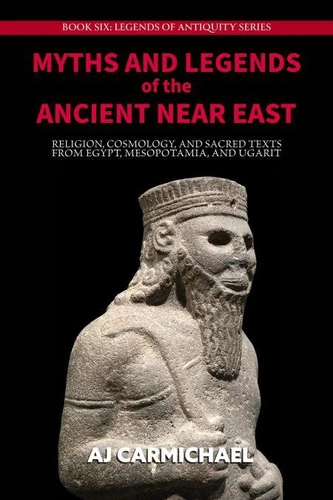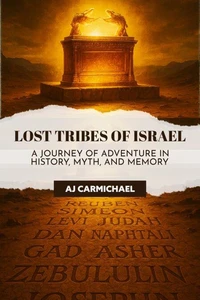Nouveauté
Myths and Legends of the Ancient Near East: Religion, Cosmology, and Sacred Texts from Egypt, Mesopotamia, and Ugarit. Legends of Antiquity, #6
Par :Formats :
Disponible dans votre compte client Decitre ou Furet du Nord dès validation de votre commande. Le format ePub est :
- Compatible avec une lecture sur My Vivlio (smartphone, tablette, ordinateur)
- Compatible avec une lecture sur liseuses Vivlio
- Pour les liseuses autres que Vivlio, vous devez utiliser le logiciel Adobe Digital Edition. Non compatible avec la lecture sur les liseuses Kindle, Remarkable et Sony
 , qui est-ce ?
, qui est-ce ?Notre partenaire de plateforme de lecture numérique où vous retrouverez l'ensemble de vos ebooks gratuitement
Pour en savoir plus sur nos ebooks, consultez notre aide en ligne ici
- FormatePub
- ISBN8231806683
- EAN9798231806683
- Date de parution03/08/2025
- Protection num.pas de protection
- Infos supplémentairesepub
- ÉditeurWalzone Press
Résumé
Mesopotamia, "the land between the rivers, " lies cradled by the Tigris and Euphrates. In the modern world, this area encompasses Iraq, northeastern Syria, southeastern Turkey, and southwestern Iran. To the ancient mind, it was a liminal place, where the forces of life and death were ever in tension. Fertile soil gave birth to the first great urban civilizations, but it was bordered by deserts, mountains, and marshes that represented the dangerous and unknown.
The Tigris River, with its fast-flowing, volatile currents, was feared and revered as a force of divine energy. The Euphrates, broader and gentler, was a lifeline for irrigation and agriculture. Together, they deposited the silt that fed barley and wheat, creating the agricultural surplus that allowed cities like Uruk, Ur, Eridu, and Lagash to flourish as early as 4000 BCE. Yet, both rivers could turn catastrophic, flooding with little warning, destroying fields, homes, and lives.
These unpredictable floods found their echo in the Flood Myth-the story of Ziusudra, later Utnapishtim, surviving the deluge decreed by angry gods.
The Tigris River, with its fast-flowing, volatile currents, was feared and revered as a force of divine energy. The Euphrates, broader and gentler, was a lifeline for irrigation and agriculture. Together, they deposited the silt that fed barley and wheat, creating the agricultural surplus that allowed cities like Uruk, Ur, Eridu, and Lagash to flourish as early as 4000 BCE. Yet, both rivers could turn catastrophic, flooding with little warning, destroying fields, homes, and lives.
These unpredictable floods found their echo in the Flood Myth-the story of Ziusudra, later Utnapishtim, surviving the deluge decreed by angry gods.
Mesopotamia, "the land between the rivers, " lies cradled by the Tigris and Euphrates. In the modern world, this area encompasses Iraq, northeastern Syria, southeastern Turkey, and southwestern Iran. To the ancient mind, it was a liminal place, where the forces of life and death were ever in tension. Fertile soil gave birth to the first great urban civilizations, but it was bordered by deserts, mountains, and marshes that represented the dangerous and unknown.
The Tigris River, with its fast-flowing, volatile currents, was feared and revered as a force of divine energy. The Euphrates, broader and gentler, was a lifeline for irrigation and agriculture. Together, they deposited the silt that fed barley and wheat, creating the agricultural surplus that allowed cities like Uruk, Ur, Eridu, and Lagash to flourish as early as 4000 BCE. Yet, both rivers could turn catastrophic, flooding with little warning, destroying fields, homes, and lives.
These unpredictable floods found their echo in the Flood Myth-the story of Ziusudra, later Utnapishtim, surviving the deluge decreed by angry gods.
The Tigris River, with its fast-flowing, volatile currents, was feared and revered as a force of divine energy. The Euphrates, broader and gentler, was a lifeline for irrigation and agriculture. Together, they deposited the silt that fed barley and wheat, creating the agricultural surplus that allowed cities like Uruk, Ur, Eridu, and Lagash to flourish as early as 4000 BCE. Yet, both rivers could turn catastrophic, flooding with little warning, destroying fields, homes, and lives.
These unpredictable floods found their echo in the Flood Myth-the story of Ziusudra, later Utnapishtim, surviving the deluge decreed by angry gods.















